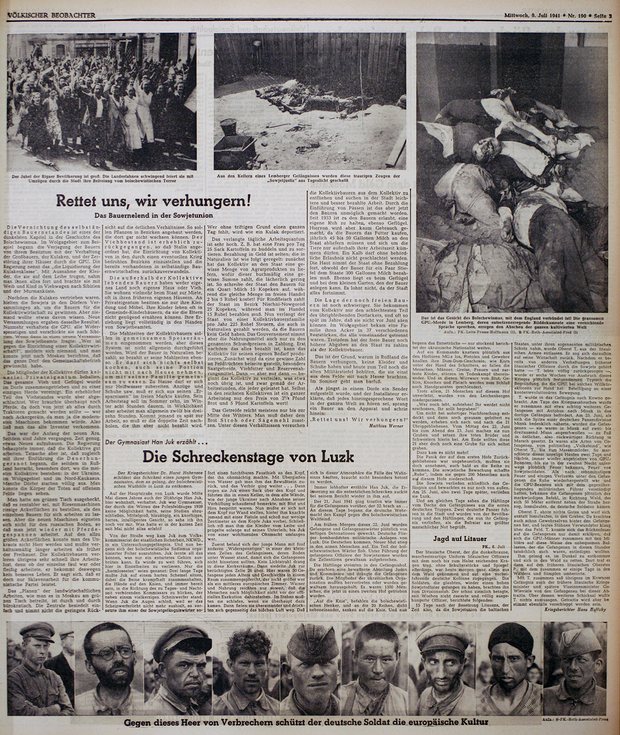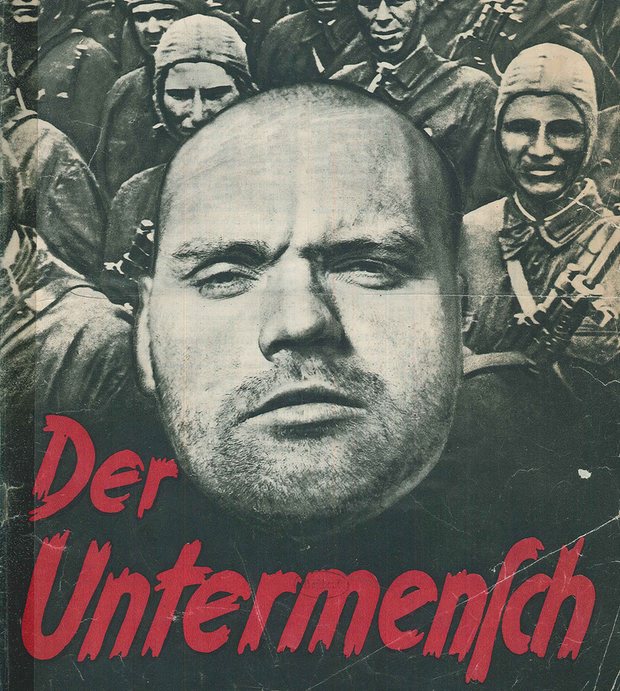Revealed: How Associated Press Cooperated with the Nazis
MEDIA, 4 Apr 2016
Philip Oltermann – The Guardian
German historian shows how news agency retained access in 1930s by promising not to undermine strength of Hitler regime.
30 Mar 2016 – The Associated Press news agency entered a formal cooperation with the Hitler regime in the 1930s, supplying American newspapers with material directly produced and selected by the Nazi propaganda ministry, archive material unearthed by a German historian has revealed.
When the Nazi party seized power in Germany in 1933, one of its first objectives was to bring into line not just the national press, but international media too. The Guardian was banned within a year, and by 1935 even bigger British-American agencies such as Keystone and Wide World Photos were forced to close their bureaus after coming under attack for employing Jewish journalists.
Associated Press, which has described itself as the “marine corps of journalism” (“always the first in and the last out”) was the only western news agency able to stay open in Hitler’s Germany, continuing to operate until the US entered the war in 1941. It thus found itself in the presumably profitable situation of being the prime channel for news reports and pictures out of the totalitarian state.
In an article published in academic journal Studies in Contemporary History , historian Harriet Scharnberg shows that AP was only able to retain its access by entering into a mutually beneficial two-way cooperation with the Nazi regime.
The New York-based agency ceded control of its output by signing up to the so-called Schriftleitergesetz (editor’s law), promising not to publish any material “calculated to weaken the strength of the Reich abroad or at home”.
This law required AP to hire reporters who also worked for the Nazi party’s propaganda division. One of the four photographers employed by the Associated Press in the 1930s, Franz Roth, was a member of the SS paramilitary unit’s propaganda division, whose photographs were personally chosen by Hitler. AP has removed Roth’s pictures from its website since Scharnberg published her findings, though thumbnails remain viewable due to “software issues”.
AP also allowed the Nazi regime to use its photo archives for its virulently antisemitic propaganda literature. Publications illustrated with AP photographs include the bestselling SS brochure “Der Untermensch” (“The Sub-Human”) and the booklet “The Jews in the USA”, which aimed to demonstrate the decadence of Jewish Americans with a picture of New York mayor Fiorello LaGuardia eating from a buffet with his hands.
Coming just before Associated Press’s 170th anniversary in May, the newly discovered information raises not just difficult questions about the role AP played in allowing Nazi Germany to conceal its true face during Hitler’s first years in power, but also about the agency’s relationship with contemporary totalitarian regimes.
While the AP deal enabled the west to peek into a repressive society that may otherwise have been entirely hidden from view – for which Berlin correspondent Louis P Lochner won a Pulitzer in 1939 – the arrangement also enabled the Nazis to cover up some of its crimes. Scharnberg, a historian at Halle’s Martin Luther University, argued that AP’s cooperation with the Hitler regime allowed the Nazis to “portray a war of extermination as a conventional war”.
In June 1941, Nazi troops invaded the town of Lviv in western Ukraine. Upon discovering evidence of mass killings carried out by Soviet troops, German occupying forces had organised “revenge” pogroms against the city’s Jewish population.
Franz Roth’s photographs of the dead bodies inside Lviv prisons were selected upon Hitler’s personal orders and distributed to the American press via AP.
“Instead of printing pictures of the days-long Lviv pogroms with its thousands of Jewish victims, the American press was only supplied with photographs showing the victims of the Soviet police and ‘brute’ Red Army war criminals,” Scharnberg told the Guardian.
“To that extent it is fair to say that these pictures played their part in disguising the true character of the war led by the Germans,” said the historian. “Which events were made visible and which remained invisible in AP’s supply of pictures followed German interests and the German narrative of the war.”

Nazi party newspaper Völkischer Beobachter, using photographs by AP photographer Franz Roth. Photograph: AP
Approached with these allegations, AP said in a statement that Scharnberg’s report “describes both individuals and their activities before and during the war that were unknown to AP”, and that it is currently reviewing documents in and beyond its archives to “further our understanding of the period”.
An AP spokesperson told the Guardian: “As we continue to research this matter, AP rejects any notion that it deliberately ‘collaborated’ with the Nazi regime. An accurate characterisation is that the AP and other foreign news organisations were subjected to intense pressure from the Nazi regime from the year of Hitler’s coming to power in 1932 until the AP’s expulsion from Germany in 1941. AP management resisted the pressure while working to gather accurate, vital and objective news in a dark and dangerous time.”
The new findings may only have been of interest to company historians, were it not for the fact that AP’s relationship with totalitarian regimes has once again come under scrutiny. Since January 2012, when AP became the first western news agency to open a bureau in North Korea, questions have repeatedly been raised about the neutrality of its Pyongyang bureau’s output.
In 2014, Washington-based website NK News alleged that top executives at AP had in 2011 “agreed to distribute state-produced North Korean propaganda through the AP name” in order to gain access to the highly profitable market of distributing picture material out of the totalitarian state. The Democratic People’s Republic of Korea comes second from bottom in the current World Press Freedom Index.
A leaked draft agreement showed that AP was apparently willing to let the Korean Central News Agency (KCNA) handpick one text and one photo journalist from its agitation and propaganda unit to work in its bureau. AP told the Guardian that “it would be presumptuous to assume ‘the draft’ has any significance”, but declined to disclose further information on the final agreement.
Significant events, reported in the international media, were not covered by AP’s Pyongyang bureau, such as the six-week public disappearance of North Korean leader Kim Jong-un in September and October 2014, the November 2014 Sony Entertainment hack that had allegedly been orchestrated by a North Korean cyberwarfare agency, or a reports of a famine in South Hwanghae province in 2012.
When the French news agency Agence France-Presse signed an agreement to open a bureau in Pyongyang in January this year, AP’s former Pyongyang bureau chief Jean Lee commented that it was a sign of the regime’s “increased confidence in its ability to keep foreign journalists under control”.
The AP spokesperson denied that the agency submitted to censorship. “We do not run stories by the Korean Central News Agency or any government official before we publish them. At the same time, officials are free to grant or deny access or interviews.”
Nate Thayer, a former AP correspondent in Cambodia who published the leaked draft agreement, told the Guardian: “It looks like AP have learned very little from their own history. To claim, as the agency does, that North Korea does not control their output, is ludicrous. There is naturally an argument that any access to secretive states is important. But at the end of the day it matters whether you tell your readers that what you are reporting is based on independent and neutral sources”.
Go to Original – theguardian.com
DISCLAIMER: The statements, views and opinions expressed in pieces republished here are solely those of the authors and do not necessarily represent those of TMS. In accordance with title 17 U.S.C. section 107, this material is distributed without profit to those who have expressed a prior interest in receiving the included information for research and educational purposes. TMS has no affiliation whatsoever with the originator of this article nor is TMS endorsed or sponsored by the originator. “GO TO ORIGINAL” links are provided as a convenience to our readers and allow for verification of authenticity. However, as originating pages are often updated by their originating host sites, the versions posted may not match the versions our readers view when clicking the “GO TO ORIGINAL” links. This site contains copyrighted material the use of which has not always been specifically authorized by the copyright owner. We are making such material available in our efforts to advance understanding of environmental, political, human rights, economic, democracy, scientific, and social justice issues, etc. We believe this constitutes a ‘fair use’ of any such copyrighted material as provided for in section 107 of the US Copyright Law. In accordance with Title 17 U.S.C. Section 107, the material on this site is distributed without profit to those who have expressed a prior interest in receiving the included information for research and educational purposes. For more information go to: http://www.law.cornell.edu/uscode/17/107.shtml. If you wish to use copyrighted material from this site for purposes of your own that go beyond ‘fair use’, you must obtain permission from the copyright owner.
